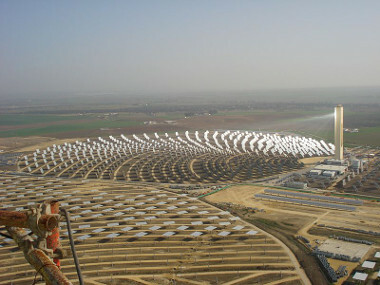Have you ever stopped to think how big Brazil is? We are the fifth largest in the world in territorial size! It is common to say that our territory is that of a continental country, as its area is equivalent to that of a continent.
For this reason, we need to regionalize our geographic space to better understand how it works. Thus, it is easier for the government to create improvement policies based on data on the performance of different locations. The best known of the regionalizations is that of the IBGE, which divides Brazil into five regions, but there are other proposals.
One of the most adequate regionalizations in Brazil for understanding the territory is the one that divides our country into three geoeconomic regions: the Center-South, the Northeast and the Amazon (as illustrated in the map at the beginning of this text). The division of the country into these three areas is important because it reveals the main contrasts both in the process of historical occupation of the territory and in the current economic and social characteristics. Another aspect is that this regionalization does not obey the state borders, as happens with the division made by the IBGE.
Below, let's learn a little about each geoeconomic region:
Amazon
It covers the territories of the states of Acre, Amazonas, Roraima, Rondônia, Amapá, Pará and part of Maranhão, Tocantins and Mato Grosso. Despite being the largest of the regions, it is the least populated, with several of its areas containing what are called “demographic voids”. This is due to the low number of inhabitants per square kilometer.
It is also the region with the lowest industrialization rates in the country, although there is a Free Trade Zone in Manaus and Petrobras Petrochemical Pole, which are important production areas and employ many workers. The Amazon contributes only 8% of the Brazilian GDP (Gross Domestic Product), but its importance lies even in the conservation of the Amazon Forest, which is increasingly threatened by agricultural frontier in the country. The main capitals of this region are Manaus, Palmas and Belém.

Manaus, one of the main cities in the Amazon geoeconomic region
North East
The geoeconomic region of the Northeast was the first area in Brazil to be occupied by the colonization process and still retains the marks of this historic event. It covers the states of Piauí, Rio Grande do Norte, Ceará, Paraíba, Pernambuco, Alagoas, Sergipe, Bahia, in addition to eastern Maranhão and northern Minas Gerais.
This region went through historical problems, especially throughout the 20th century, when Brazil's economic concentration occurred in the Center-South. Because of this, in addition to some problems related to the dry climate in some areas, the Northeast suffered, in large part, with emigration (departure of inhabitants) to other regions, in addition to presenting a high degree of dependency.
Currently, the region is recovering, industrializing and increasing its share of the Brazilian GDP, which currently stands at 14%. The main cities are Salvador (which was once the capital of Brazil), Fortaleza, Recife and Natal.

Fortaleza, an important economic center in the Northeast region
South Center
The south-central region occupies the area of the states of Goiás, São Paulo, Rio de Janeiro, Espírito Santo, Paraná, Santa Catarina, Rio Grande de Sul, Mato Grosso do Sul, as well as part of Mato Grosso and Minas General. It is the most populated and economically most advanced region, accounting for over 78% of the Brazilian GDP, despite occupying only 26% of the territory.
The main Brazilian metropolises – São Paulo and Rio de Janeiro – are located in this region. In addition, the areas with the greatest industrial production (Southeast and South) and agricultural (Midwest) are also in the center-south of Brazil. Its economic advances have taken place since the coffee growing period, at the beginning of the 20th century, which boosted not only production, but also infrastructure.
On the other hand, high urbanization rates generate several social problems and the near destruction of three major types of vegetation: the Atlantic Forest, the Araucaria Forest and the Cerrado. The main cities are São Paulo, Rio de Janeiro, Belo Horizonte, Brasília and Porto Alegre.

São Paulo, the main Brazilian metropolis²
_________________________
¹ Image Credits: Raphael.lorenzeto / Wikimedia Commons
² Image Credits: Filipe Frazao / Shutterstock
By Rodolfo Alves Pena
Graduated in Geography


